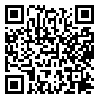BibTeX | RIS | EndNote | Medlars | ProCite | Reference Manager | RefWorks
Send citation to:
URL: http://jdc.tums.ac.ir/article-1-5728-en.html
2- Social Development and Health Promotion Research Center, Health Institute, Kermanshah University of Medical Sciences, Kermanshah, Iran ,
Background and Aim: Skin cancer is one of the most common cancers. Numerous studies have shown the positive effect of using sunscreen creams in preventing skin cancer. The purpose of this study was to determine the inequality in the use of sunscreen cream.
Methods: This cross-sectional study was conducted among adults in Kermanshah city. Data was collected using questionnaire by interview. Concentration index and curve were used to quantify and analyze inequality in sunscreen use. The results of adjusted odds ratio and decomposition analysis for sunscreen use were also estimated.
Results: 14.39% used sunscreen. The ratio of use in men was 5.65% and in women was 21.72%. The concentration index for sunscreen use (P<0.001) was 0.344, which indicates the greater concentration of sunscreen use among the rich. The rich groups are 3.72 times more likely to use sunscreen than the poor, and people in the middle class are also 1.48 times more likely to use sunscreen. The highest share of participation in the creation of inequality in sunscreen consumption was achieved by the socio-economic status variable with 61.26%, education level with 13.23% and age with 13.02%.
Conclusion: The focus of health promotion interventions should target groups with low socio-economic status. Men and less educated people should be prioritized in the development and implementation of interventions.
Received: 2024/10/5 | Accepted: 2024/08/5 | Published: 2024/08/5
| Rights and permissions | |
 |
This work is licensed under a Creative Commons Attribution-NonCommercial 4.0 International License. |





